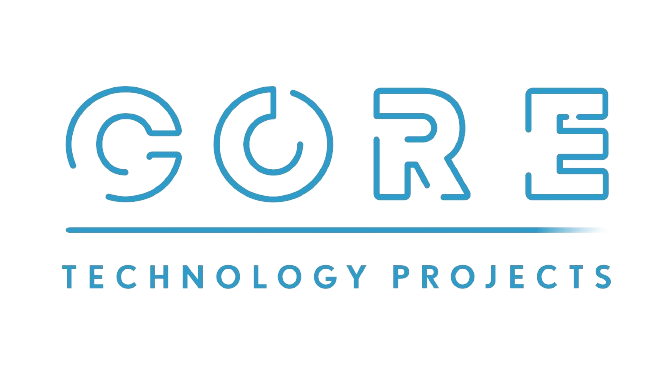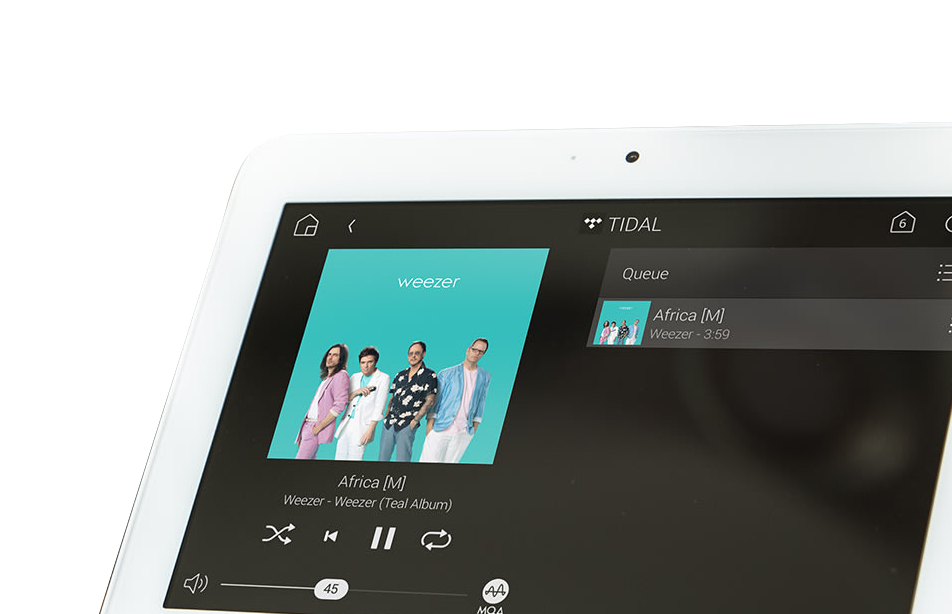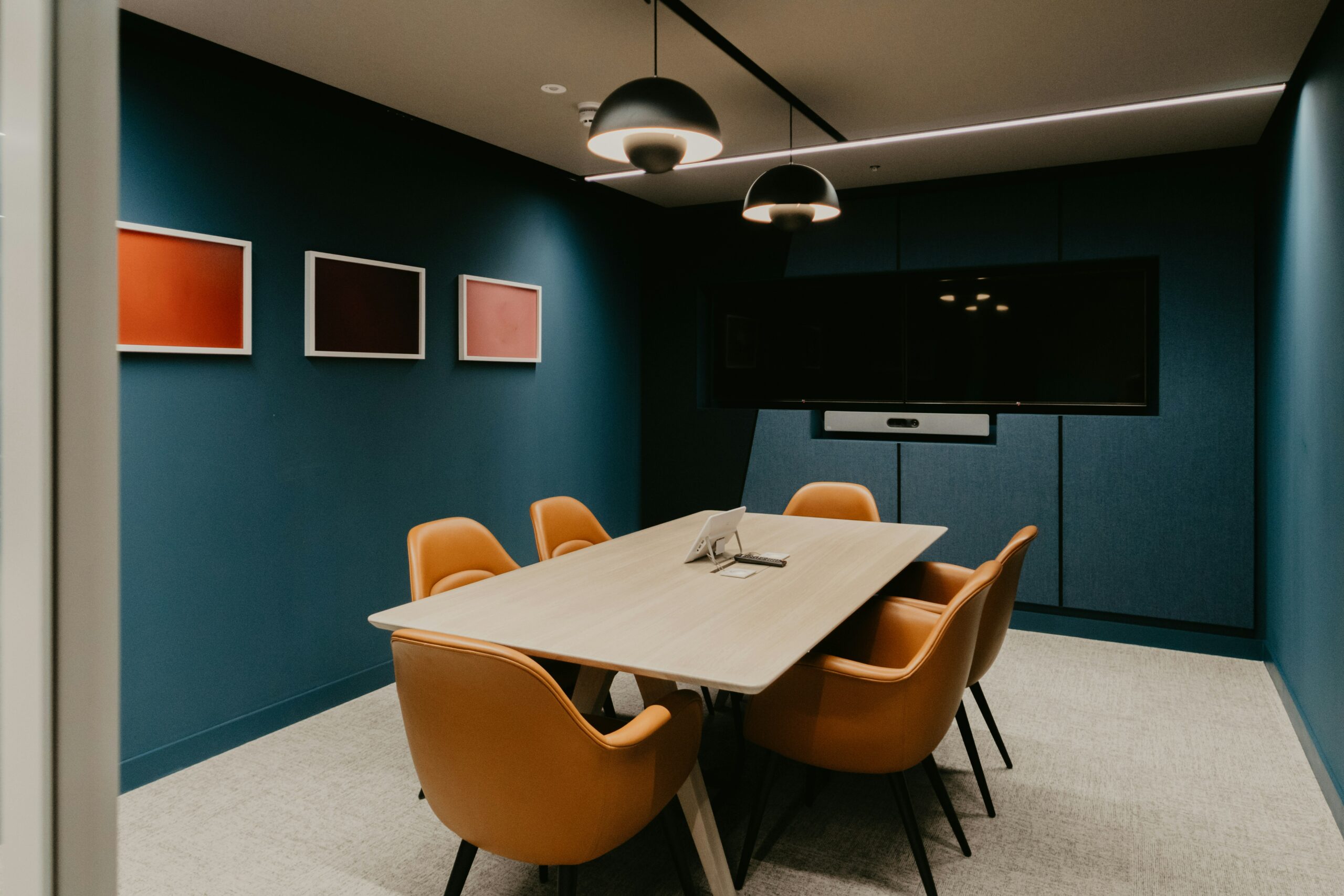We all want meetings to go well. But we’ve all had times when technology lets us down. Bad sound, unclear video, or complicated controls can spoil even the best-planned meeting. Good audio visual equipment can solve these problems and improve how your meeting spaces feel and function.
Let’s explore how reliable AV technology can genuinely make meetings better and more enjoyable for everyone involved.
What gets in the way of a good meeting
Most teams just want their meeting spaces to work. The setup should be straightforward, support in-person and remote collaboration, and not get in the way. But these are some of the things that often trip people up:
- The room only works well for people in it, not for remote attendees
- The display is too small or unclear
- The sound is hard to hear or picks up background noise
- The camera shows only part of the room
- Switching between devices is confusing
Each of these things creates a bit of friction. Added together, they can make meetings more effort than they need to be.
What a well-equipped meeting room looks like
A good AV setup makes your space easier to use, not more complicated. You walk into the room and press one button to start. The screen is clear. The camera is already set up properly. People in the room and those joining remotely can see and hear each other. You share your screen without needing to mess around with cables or settings.
Simple tools like wireless presentation systems and touch control panels help meetings get going faster. They cut out confusion and let people focus on the conversation, not the setup.
Displays that suit your space
Every meeting room is different. A small huddle space may only need a compact screen and simple camera. A boardroom might need a larger display so everyone can see clearly. In more collaborative spaces, an interactive display helps teams sketch ideas or present together. And in client-facing rooms, a clean, high-resolution screen adds polish without being flashy.
It’s also worth thinking about how people use the screen. Are you mostly sharing slides? Whiteboarding together? Switching between video calls and laptops? A setup with the right mix of screen size, resolution and flexibility makes a big difference.
Cameras that help everyone feel involved
When people join remotely, they need to feel like part of the meeting, not just viewers. A good camera makes this possible. Some stay fixed, while others automatically pan to whoever is talking. Auto-framing cameras are great in rooms where conversation moves around. For quieter sessions, a simple wide-angle camera might do the job.
The goal is to include everyone. A clear, steady view of the room helps remote attendees follow along and feel more connected.
Clear audio that makes conversations easy
Bad audio is one of the quickest ways to lose focus. Muffled speech, background hum or echo makes it hard to stay engaged. Good microphones pick up voices evenly. Speakers make sure everyone is heard clearly.
Soundbars work well in mid-sized rooms and combine microphones and speakers in a single neat unit. In larger or more formal spaces, ceiling mics keep the table clear while covering the whole room. The best choice depends on how people use the space and how the room is laid out.
Controls that make sense
No one should feel nervous about starting a meeting. Simple controls make it easy to get going without needing help. A touchscreen panel, tablet or remote can bring everything together, from starting a call to adjusting volume or switching sources. Easy-to-use controls help people feel comfortable using the room, even if they haven’t used it before.
Matching AV tech to your room and team
There’s no one-size-fits-all answer. The right choice depends on how your team uses the space day to day.
A small meeting room used for quick check-ins might just need a screen and webcam. Add a wireless presentation system and meetings become even easier to run.
For project work or regular team catch-ups, good audio, screen sharing and video tools help keep things flowing. Tools like interactive displays and auto-framing cameras can support deeper collaboration.
In boardrooms or client-facing spaces, higher-quality equipment helps everything run smoothly and leaves a better impression. That might include a large display, ceiling mics, or a discreet control panel to manage the room.
Even informal areas benefit from small upgrades. A room booking panel outside the door helps avoid double-bookings and gives people a clear sense of when spaces are available.
The best setups feel natural to use and support the way your team already works.
The real benefits of good AV technology in meetings
You don’t always need to start from scratch. In many cases, one or two smart upgrades can remove the main frustrations. That might be a better microphone to cut out background noise, a camera that shows the full room, or a control system that’s easier to use. Even a room booking screen can stop confusion and keep things running smoothly.
Good AV technology can help meetings run more smoothly and make the space more enjoyable to use. It solves common problems and helps people feel more confident using the room.
Hybrid meetings become easier to manage when remote and in-office staff can see and hear clearly. With the right camera and microphone setup, everyone feels included and heard.
Modern AV systems also work well with tools your team is already using, like Zoom, Microsoft Teams, and Google Meet. You won’t need to mess with extra software or complicated logins.
Easy-to-use systems mean meetings can start on time and stay focused. That saves time and reduces stress.
When you’re hosting clients or visitors, a space that works well and looks good helps create a positive impression. Reliable AV shows your team is well organised and ready to communicate clearly.
Tips for choosing the right AV equipment
Here are a few things to keep in mind when planning or updating your meeting room setup. And if you’re not sure where to start, we’re always happy to talk it through. Core Technology Products is here to answer your questions and help you find a setup that feels right for your team.
- Start with the room itself. Think about how big the space is and how many people usually use it. Larger rooms need better audio coverage and bigger screens. Smaller rooms can often get by with simpler, more compact setups.
- Think about how your team works. If your meetings are mostly in person, your focus might be on good presentation displays and clear audio. If hybrid meetings are the norm, then you’ll want reliable cameras and microphones that help remote team members feel part of the room.
- Ease of use matters. If the system is confusing or takes too long to set up, people will avoid using it. Look for control systems that keep things simple.
- Plan for flexibility. Choose equipment that works with the tools your team already uses and can grow with your business. This avoids needing to start over every time your needs change.
A few small changes can make a big difference
You don’t need to be an expert in AV. That’s what we’re here for. At Core Technology Products, we start by understanding how your rooms are used. We look at what’s working, what’s causing issues, and where you’d like things to improve.
We then help you choose the best setup based on your space, team, and budget. Some businesses need a full fit-out. Others just want a few well-placed improvements. Either way, we’ll help you make informed decisions.
Want to see the tech in action?
The best way to understand how a room should feel is to step into one that works. At Core Tech, we’ve set up our showroom to reflect real meeting room designs.
You can see how displays, cameras, microphones and control systems come together to support different types of meetings, from quick huddles to boardroom presentations.
You’ll get a chance to try out the equipment for yourself, ask questions, and chat through ideas with our team. Whether you’re starting fresh or improving what you’ve already got, it’s a useful step to take.
Visit Core Technology Products to book a tour.



